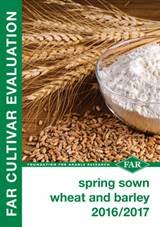
This disease was identified ten years ago on a farm near where one of the current cases has occurred, but has not been reported since. As it’s been a decade since the last notified occurrence of this disease in New Zealand, it is thought to have only a minor impact on wheat production. It is present, but not common, in the UK, where trials showed that it could reduce grain yield in susceptible winter wheat cultivars by up to 50% in patches of infection. WSBMV occurs in many parts of the world (North America, Asia and Europe).
The fungus Polymyxa graminis, which has been identified in many soils in New Zealand, spreads the virus.The fungal vector requires adequate moisture to carry the virus to the roots of the wheat plant, with the infection usually occurring in the autumn or winter.
Spring sown wheat is not affected. The virus is slow to spread and may cause plant stunting and streaks or mosaic patterns on leaves, resulting in reduced tillering and grain size. Symptoms are normally expressed when spring temperatures remain low for long periods (which seldom occurs in New Zealand) and fade during summer. The virus survives within the spores of the vector, so that once it is present in the soil it persists, even in the absence of wheat crops, for many years.
The disease is mainly spread through soil movement eg on farm machinery, footwear, root vegetables (e.g. potatoes, turnips), bulbs or transplants. Movement can also be by water and wind. If this disease is diagnosed, it is probably a good idea to exercise care to minimise soil movement (preferably by using a high pressure hose to remove soil from machinery) within and between properties.
Resistant cultivars give the best control of WSBMV, but as it occurs so infrequently we have no recent data on the resistance of cultivars grown in New Zealand. Less effective controls include crop rotation and late autumn planting.
Those suspecting that this disease is present on their farms are asked to please contact FAR, as it would like to know the extent of its spread.
Photo: Mark Braithwaite, Plant Diagnostics



 Classifieds
Classifieds

